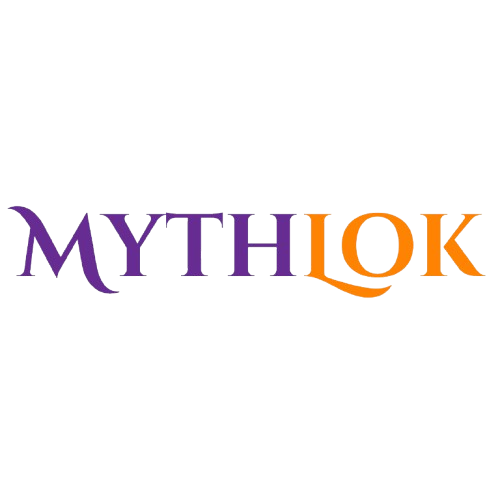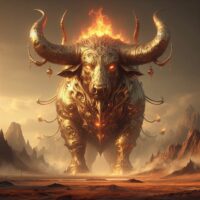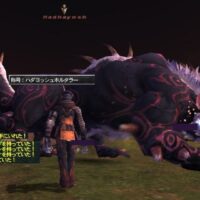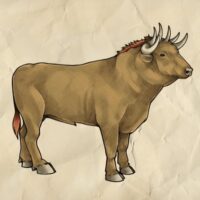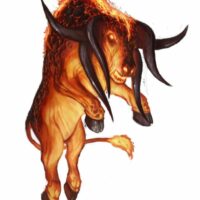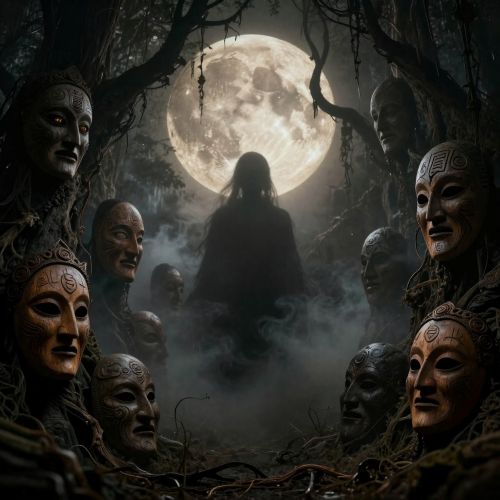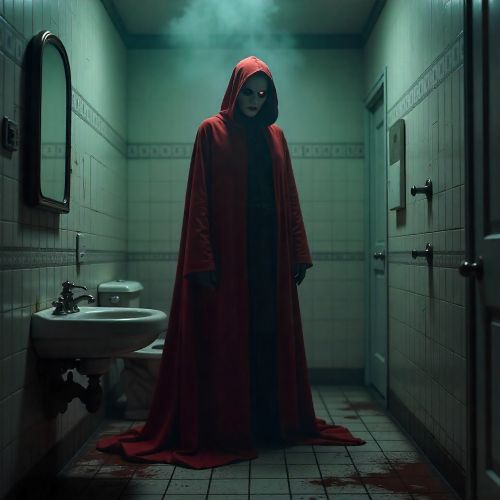Hadhayosh : The Brass Ox
Listen
At a glance
| Description | |
|---|---|
| Origin | Iranian Mythology |
| Classification | Animals |
| Family Members | N/A |
| Region | Iran |
| Associated With | Grant life, Right to rule |
Hadhayosh
Introduction
In Iranian mythology, Hadhayosh emerges as a creature of unparalleled majesty and mystery, depicted as a magnificent and powerful beast. Holding a significant place in ancient Persian folklore and legends, Hadhayosh is a colossal, metallic ox forged from legend. This enigmatic creature embodies duality – both immense destruction and the potential for everlasting life. Referenced in the Avesta, the foundational text of Zoroastrianism, Hadhayosh remains shrouded in mystery, its true nature open to interpretation, deeply rooted in ancient Persian mythology.
Physical Traits
The Avesta describes the Hadhayosh as a primeval ox of immense size, towering over all other creatures. Later interpretations portray it as a colossal brass behemoth standing 52 feet tall and weighing 57 tons. Adorning its head are six powerful horns, two pairs curving outwards and another two jutting forward menacingly, capable of inflicting grievous wounds. A fiery mane symbolizes its divine connection, emitting heat that can reduce touchers to ashes. Its formidable stench strikes fear into hearts, yet it’s described as peaceful when undisturbed, grazing minimally and roaming vast distances nomadically. However, it can transform into a furious force if provoked.
Family
In contrast to many mythological creatures with intricate family lineages, Hadhayosh appears as a solitary entity in lore, with no mention of a mate or offspring. This reinforces its portrayal as a primeval being existing beyond conventional procreation. While its lineage isn’t explicitly detailed, Hadhayosh stands among mythical beings created by divine hands, embodying immense power. Some interpretations hint at a connection to two oxen that emerge after its demise, symbolizing renewal and rebirth. In Iranian mythology, Hadhayosh is associated with divine and heroic figures of the ancient pantheon, often depicted as a distant relative or descendant of primordial beings who shaped the cosmos. Legends intertwine its lineage with noble heroes and gods, emphasizing its role as a guardian and ally to those deserving of its loyalty.
Other names
The creature known as Hadhayosh is also recognized by the name “Sarsaok” in the Avesta, indicating a deeper significance within earlier forms of Zoroastrianism. The origin and precise meaning of “Sarsaok” remain obscure, contributing to the mystique surrounding Hadhayosh. Across different historical periods and regions, Hadhayosh is referred to by various names such as “Hadda-yo,” “Hadha-yasna,” and “Haya-yasna” in Persian texts. These diverse names highlight the creature’s multifaceted representations and interpretations throughout Iran’s rich history, underscoring its enduring presence in the region’s cultural consciousness.
Powers and Abilities
Hadhayosh is revered for its diverse and awe-inspiring powers throughout Iranian mythology. Known for its supernatural speed and endurance, it can outpace swift steeds and traverse challenging landscapes effortlessly. Legends attribute it with the ability to communicate with humans through telepathy or dreams, offering profound guidance and wisdom. In battle, Hadhayosh is a formidable force, capable of turning the tide in favor of its allies with its legendary strength and prowess.
Beyond its physical attributes, Hadhayosh holds a mystical significance tied to themes of immortality and renewal. It is said to possess destructive power when provoked, unleashing fiery breath and razor-sharp horns that cause widespread devastation. The Avesta mentions an elixir called “Hush,” derived from Hadhayosh’s body, believed to grant eternal life or greatly extend one’s lifespan. Upon its death, the earth is said to yield 55 species of grain and 12 medicinal plants, symbolizing renewal and the potential for rebirth from destruction—a concept central to Zoroastrian beliefs. Hadhayosh’s role extends beyond mere physical prowess, encompassing its mythical ability to grant eternal life, influence divine rule, and symbolize the cycle of life and death in Iranian mythology.
Modern Day Influence
Hadhayosh, an ancient creature from Iranian mythology, continues to influence modern culture. Role-playing games and fantasy fiction often feature colossal oxen with fiery attributes, clearly inspired by Hadhayosh’s imposing form. The creature’s power to grant immortality through its demise introduces a fascinating duality of destruction and creation, reflecting the natural world’s complexities and the delicate balance between life and death.
The Hadhayosh’s legacy goes beyond entertainment, offering a powerful metaphor for the cyclical nature of existence. Its association with renewal and rebirth symbolizes how destruction can lead to new creation. While direct modern influences of Hadhayosh are not widely documented, its presence in ancient mythology has enriched Persian folklore, inspiring contemporary stories and cultural expressions. Artists and writers draw from its mythical stature, embedding themes of courage, loyalty, and the quest for spiritual enlightenment into modern narratives, thereby preserving and celebrating Persian identity and heritage.
.
Related Images
Frequently Asked Questions
What is lorem Ipsum?
I am text block. Click edit button to change this text. Lorem ipsum dolor sit amet, consectetur adipiscing elit. Ut elit tellus, luctus nec ullamcorper mattis, pulvinar dapibus leo.
What is lorem Ipsum?
I am text block. Click edit button to change this text. Lorem ipsum dolor sit amet, consectetur adipiscing elit. Ut elit tellus, luctus nec ullamcorper mattis, pulvinar dapibus leo.
What is lorem Ipsum?
I am text block. Click edit button to change this text. Lorem ipsum dolor sit amet, consectetur adipiscing elit. Ut elit tellus, luctus nec ullamcorper mattis, pulvinar dapibus leo.
What is lorem Ipsum?
I am text block. Click edit button to change this text. Lorem ipsum dolor sit amet, consectetur adipiscing elit. Ut elit tellus, luctus nec ullamcorper mattis, pulvinar dapibus leo.
What is lorem Ipsum?
I am text block. Click edit button to change this text. Lorem ipsum dolor sit amet, consectetur adipiscing elit. Ut elit tellus, luctus nec ullamcorper mattis, pulvinar dapibus leo.

